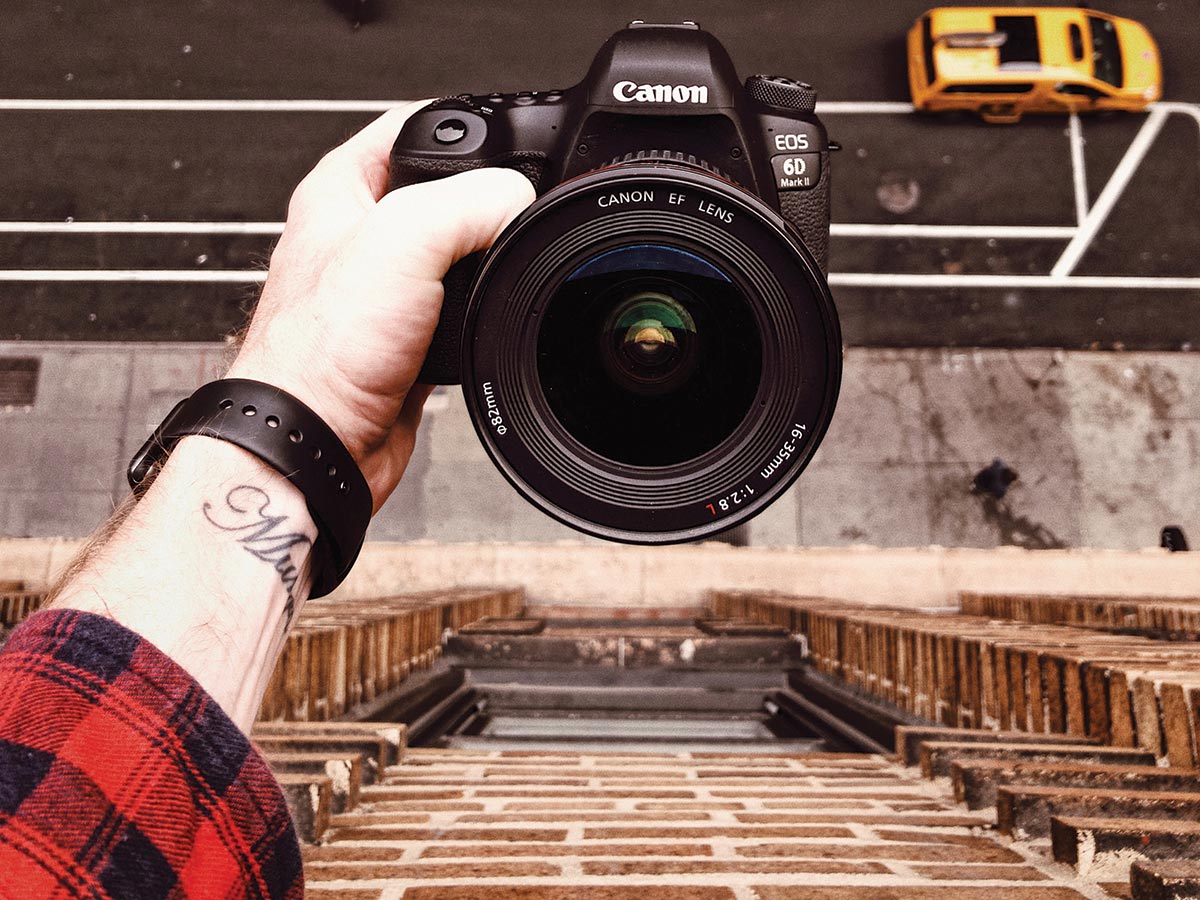Spellbrand Blog
The Famous Canon Logo: Origin and Evolution

The Canon logo is one of the most recognized brand marks in the world. That distinctive red wordmark with its unique “C” appears on cameras, printers, and imaging equipment across the globe. But the story behind this iconic logo is far more interesting than its current simplicity suggests.
Understanding how Canon’s logo evolved from a complex religious symbol to today’s clean, modern mark offers valuable lessons in logo evolution, brand identity, and the power of strategic simplification.
The Buddhist Origins: Kwanon
Canon’s story begins in 1933 with the Precision Optical Instruments Laboratory in Tokyo. The company’s first cameras were experimental models, and they needed a name that reflected their Japanese heritage and aspirations.
The founders chose “Kwanon,” named after Kannon, the Buddhist Goddess of Mercy. In Buddhist tradition, Kannon is often depicted with a thousand arms and flames, representing her ability to help countless people simultaneously. This imagery perfectly captured the company’s ambition to reach a global audience.
The first Canon logo featured this goddess imagery—a complex design showing Kannon with her thousand arms and flames. It was intricate, meaningful, and deeply connected to Japanese culture. But as the company’s ambitions grew beyond Japan, they realized this logo had limitations.
The Shift to Canon
By 1935, just two years after founding, the company made a crucial decision: they changed the name from Kwanon to Canon. This wasn’t just a rebrand—it was a strategic move toward global expansion.
The name “Canon” had multiple advantages. It was easy to pronounce in multiple languages, avoiding the pronunciation challenges of “Kwanon.” It also carried meaning: “canon” refers to a standard or rule, suggesting the company’s goal of setting industry standards.
The name change reflected Canon’s vision of becoming a global leader in precision optics. They weren’t just making cameras for Japan—they were creating products that would set the standard worldwide.
Early Logo Evolution: 1947-1955
When Precision Optical Instruments Laboratory became Canon Camera Co., Inc. in 1947, the logo began its transformation. The complex Kannon imagery was gradually simplified, moving away from the intricate religious symbolism toward something more universally recognizable.
Between 1947 and 1953, Canon experimented with various logo designs. Some maintained elements of the original Kannon imagery. Others moved toward more abstract or typographic approaches. The challenge was maintaining brand recognition while creating something that worked globally.
In 1953, Canon introduced a unified logo design. This version maintained some connection to the company’s heritage while being more practical for international markets. Over the next two years, Canon refined this design, making subtle adjustments to typography, spacing, and proportions.
By 1955, Canon had settled on a logo design that would remain largely unchanged for nearly 50 years. This remarkable stability helped build the brand recognition Canon enjoys today.
The Modern Canon Logo
Today’s Canon logo is deceptively simple: the word “Canon” in a distinctive red color with a unique typeface. But this simplicity is the result of decades of refinement.
The Distinctive “C”
The most notable feature of the Canon logo is the unusual “C” with its inverted edge. This unique letterform makes the logo instantly recognizable. It’s modern, distinctive, and unlike anything else in typography. This custom letterform was ahead of its time—created before digital design tools made such customization common.
The Color Red
Canon’s vibrant red is carefully chosen. Red conveys energy, passion, and innovation—perfect for a technology brand. It’s also highly visible and memorable. The specific shade of red Canon uses is trademarked, ensuring consistency across all applications.
Typography and Spacing
The Canon logo uses custom typography that’s unique to the brand. The letterforms are carefully balanced, with precise spacing between letters. This attention to detail creates a logo that feels both modern and timeless.
Why Canon’s Logo Evolution Works
Canon’s logo evolution demonstrates several important principles:
Gradual Change Maintains Recognition
Canon didn’t completely redesign their logo overnight. The evolution happened gradually, allowing customers to maintain recognition while the brand modernized. This approach preserves brand equity while allowing necessary updates.
Simplicity Improves Versatility
The modern Canon logo works beautifully across all applications: on products, in advertisements, on websites, in print. The simple design scales perfectly from tiny product labels to massive billboards. This versatility is crucial for a global brand.
Distinctive Elements Create Memorability
While the Canon logo is simple, it’s not generic. The unique “C” and trademarked red color make it instantly recognizable. This balance between simplicity and distinctiveness is key to effective logo design.
Timeless Design Avoids Redesigns
Canon’s logo has remained stable for decades because it wasn’t designed to follow trends. It was designed to be timeless. This saves the company money and maintains consistent brand recognition.
Lessons for Modern Brands
Canon’s logo evolution offers valuable lessons for any brand considering a logo update:
Respect Your Heritage
Canon didn’t abandon their Japanese heritage—they evolved it. The shift from Kwanon to Canon maintained connection to the company’s origins while making the brand more globally accessible. Your logo evolution should honor your brand’s history while moving it forward.
Simplify Strategically
Simplification shouldn’t mean losing character. Canon’s logo became simpler but gained the distinctive “C” that makes it unique. When simplifying your logo, identify what makes it distinctive and preserve those elements.
Think Long-Term
Canon’s 1955 logo lasted nearly 50 years because it was designed for longevity, not trends. When evolving your logo, consider how it will look in 10, 20, or 30 years. Timeless design saves money and maintains brand equity.
Test Across Applications
Canon’s logo works because it was tested across countless applications. Before finalizing a logo evolution, test it everywhere it will appear: products, packaging, digital, print, large scale, small scale. Versatility is crucial.
Maintain Brand Equity
The most successful logo evolutions maintain recognition while improving the design. Canon’s gradual evolution allowed customers to maintain connection with the brand throughout changes. Sudden, dramatic changes can confuse customers and damage brand recognition.
The Canon Logo Today
Today, the Canon logo is one of the most recognized brand marks in the world. It appears on millions of products, in thousands of advertisements, and across countless digital platforms. Its simplicity makes it instantly recognizable, while its distinctive elements make it uniquely Canon.
The logo’s evolution from complex religious imagery to simple, modern typography reflects Canon’s journey from a Japanese startup to a global technology leader. But more importantly, it demonstrates how effective logo design can evolve with a brand while maintaining the recognition and trust that makes brands successful.
For any brand considering logo evolution, Canon’s story serves as a masterclass in balancing heritage with modernity, simplicity with distinctiveness, and change with continuity. The result is a logo that’s not just recognizable—it’s legendary.

Mash Bonigala
Creative Director & Brand Strategist
With 25+ years of building brands all around the world, Mash brings a keen insight and strategic thought process to the science of brand building. He has created brand strategies and competitive positioning stories that translate into powerful and stunning visual identities for all sizes of companies.
Featured Work
See Our Work in Action
Real brands, real results. Explore how we've helped businesses transform their identity.
Client Love
What Our Clients Say
Don't just take our word for it. Hear from the brands we've worked with.
Ernest Bannister
M.O.R.E
"My experience with the Spell brand team has been nothing short of excellent. From the beginning Mash and team made me feel very comfortable with the design process. I am extremely happy with the results of my design and look forward to working with Spellbrand; exclusively! I have told many family, friends and peers about the great work the Spellbrand team has done in creating my design. Thanks again for all your patience and professionalism; I look forward to working with you in the future."
Jenny Richard
Woods Of Fairfax
"Working with the team at Spellbrand has been fantastic! I spent time researching companies that would help me build brands for each asset that are all in different locations and more specifically build a brand that could help tell each of their unique stories. Spellbrand did just that. The process was easy. To provide them with my initial thoughts through a nicely-outlined input form they sent to me and they took that information and created a number of awesome designs. I was able to incorporate "the story" easily with a design we selected. I'm excited to get it into action and see what's in store for the next project. Also, each person I worked with has been super responsive, knowledgeable, and awesome to work with! Kudos to Mash, Mike, and Eva! I really enjoy working with you!"
Keep Reading
Related Articles
Nov 17, 2025
Use Of Color In Creating Logo Designs
Master the psychology of color in logo design. Learn how colors influence perception, build brand recognition, and create emotional connections with your audience.
Read MoreNov 17, 2025
Developing a Jewelry Logo
Learn how to create a jewelry logo that captures elegance and sophistication. Discover design strategies, typography choices, and color palettes that work for jewelry brands.
Read MoreNov 17, 2025
Eye Catching Logos Vs. Cluttered Logos
Learn the difference between eye-catching and cluttered logo designs. Discover how simplicity creates memorable brands and why less is often more in effective logo design.
Read More

